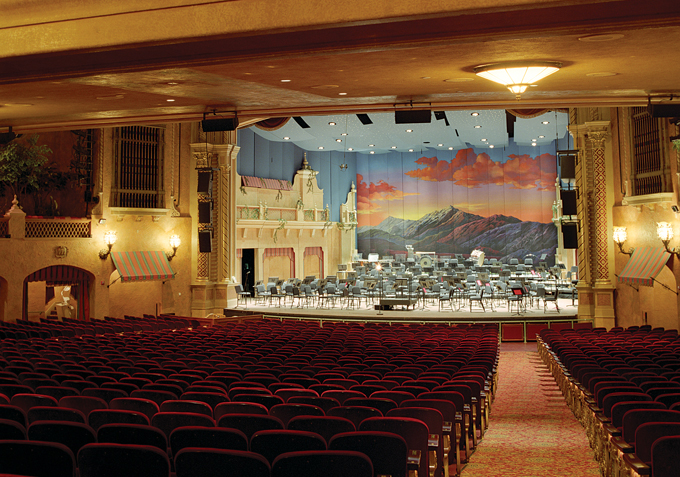
The Plaza Theatre built in 1930. Photo by Jeanne Hilary
Why is El Paso one of my favorite Texas cities? Can I put my finger on it? Mis amigos, I can almost wrap my hands around it, just like a big deshebrada (shredded beef) burrito at Rafa’s. The bright sun. The desert climate. The Spanglish, Mex-Tex, Chihuahuan culture.
Hey, I’m just warming up. No matter how many times I visit, El Paso del Norte (“The Pass of the North”), as the area was originally named by 16th-Century Spanish explorers, never disappoints. For starters, the El Paso International Airport (what a welcoming panoramic vista!) and its majestic statue (The Equestrian) of Don Juan de Oñate, “The Last Conquistador,” shapes many visitors’ first impressions of the city. And impress they surely do.
Downtown, the handsome 1930 Plaza Theatre, on Pioneer Plaza, hosts first-rate entertainment, from symphony concerts to touring Broadway shows. The El Paso Museum of Art enthralls with a wonderfully eclectic mix encompassing 12th- to 18th-Century European art; a 17th- to 19th-Century Spanish Viceroyal Collection; several thousand works by a vast array of masters (Goya, Picasso, Rivera, Degas, Rembrandt); contemporary Southwestern art; and an American collection with Remington, Russell, and Stuart. The late masters Tom Lea and Luis Jimenez, both with strong El Paso ties, left artistic legacies that validate the community’s longstanding tradition in the visual arts. Some of their works are among the museum’s most iconic.
Also downtown, the Victorian-era adobe Magoffin Home (a state historic site built around 1875), provides a prime example of Territorial-style architecture. The 19-room home contains Eastlake furnishings that reflect the refined life of a prominent pioneer family.
Southwestern style and sensibility abound in this border metropolis. The University of Texas at El Paso campus’ distinctive Bhutanese architecture contributes vibrant variety to the skyline, along with downtown’s sombrero-shaped Abraham Chavez Theatre, old Art Deco buildings, and the historic, red brick Union Depot (completed in 1905), with its signature bell tower. I’m always awed by the metro area’s massive sweep oflight at night, and, in years past, I’ve thoroughly enjoyed visiting neighboring Juárez.
I’m a big fan ofUTEP Miner athletics, the late coach Don Haskins (read/ see Glory Road), and the Sun Bowl, home of UTEP football and one of the oldest annual postseason collegiate bowl games, held on the last day of the year.
The city offers the best Mexican food in the U.S.A. (sorry, every other place comes in second). A sampling of must-try establishments includes: H&H Car Wash and Coffee Shop, L&J Café (across from historic Concordia Cemetery), Leo’s, The Little Diner (in Canutillo), Chico’s Tacos, Ciro’s (for machacado con huevo), and Los Bandidos de Carlos & Mickey’s (for its extensive menu and comfortable hacienda atmosphere). There’s also Cappetto’s (for Italian), Elmer’s (for American comfort food), Café Central (for eclectic fine dining), and—35 minutes east of the city—Cattleman’s Steakhouse, with its true-West setting at scenic Indian Cliffs Ranch.
El Paso’s Wild West history of gunfighters and outlaws (John Wesley Hardin, Pat Garrett, John Selman, Bass Outlaw, Dallas Stoudenmire) makes Tombstone look like Happy Days. The city still reigns as “Boot Capital of the World;’ with Rocketbuster, Tony Lama, Justin, and some 15 other boot/cowboy couture companies.
And there’s plenty more. On these pages, noted photographer Jeanne Hilary shares her visual quest of El Paso del Norte. Experience the city for yourself. And please, go have a plate of green chile-chicken enchiladas at L&J Cafe for me.








